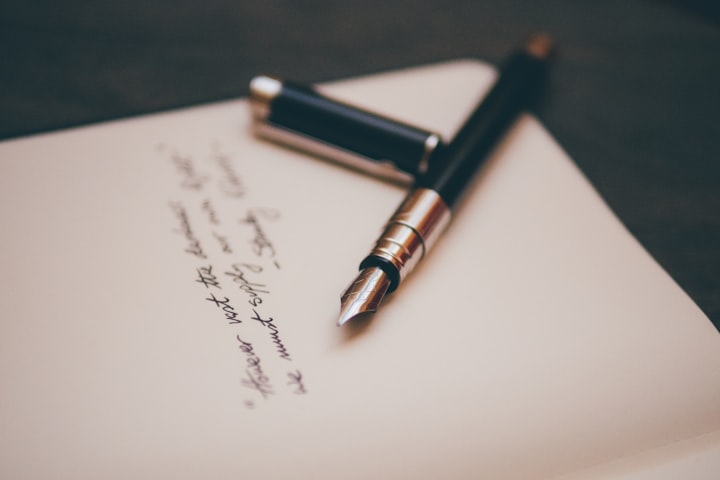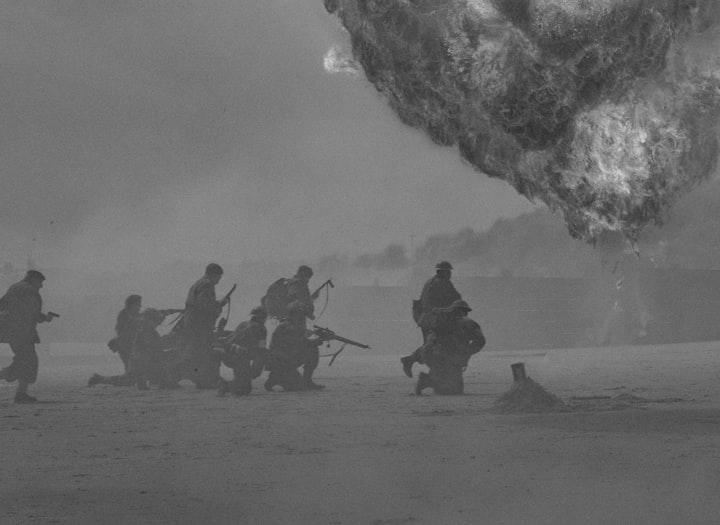Rhythm, Imagery, and Metaphor
The Poetry of Langston Hughes

The free-verse poetry of Langston Hughes was at the forefront of a great cultural awakening known as the Harlem Renaissance. By writing in free verse he was able to put a strong emphasis on ideas without being constrained to a certain metrical form. His lucid imagery painted vivid portraits of life, while his use of metaphor let him be subversive without alienating his mainstream audience. It was the interplay of these three elements - imagery, metaphor, and rhythm - that defined the poetry of Langston Hughes. His unique take on poetry not only made him an icon but also completely altered the poetic form.
Certain critics have said that the use of simple language in The Negro Speaks of Rivers is a demonstration of Hughes’ limited mastery of English, but the use of simple language was actually a clever device. Simple language made Hughes’ poetry more accessible to those unaccustomed to reading poetry. Readers of Langston Hughes have to know his intended audience to understand his poetry. Hughes was not a conscripted poet, he was not writing for Kings or Queens. He was also anti-establishment, refusing to conform to the standards imposed on him by society. He knew racism, having felt the sting of inequality when he was refused passage on a tramp steamer because of his skin color. He did not write for the white establishment. He wrote for himself mostly but became a poet of the African American community because his words resounded with a great many blacks.
Unfortunately, the blacks that he wrote for did not have the same level of education as the readers of, say, Ezra Pound. With writers like Pound, much of their meaning was hidden in obscure references or unconventional language. In the Ballad of Goodly Fere, Pound writes -
- “Ha' we lost the goodliest fere o' all
- For the priests and the gallows tree?
- Aye lover he was of brawny men,
- O' ships and the open sea.”
While Pound is writing in common English, he is using a particular vernacular that might be difficult for the uneducated (even the educated) to understand. Pound’s poetry, at least a great deal of his poetry, was written for literary scholars, not the so-called “common” people. In the Elizabethan Period, when many people were illiterate, the work of manuscript writers would have been much less accessible than the work of playwrights. Pound, in a sense, was a manuscript writer, appealing to the learned upper classes. Hughes, on the other hand, was a playwright, appealing to the less literate lower class.
Simple language was how Hughes reached a more diverse audience than Ezra Pound. Contrary to popular belief, language does not have to be dense or obscure to contain meaning. Meaning can be discerned even from simple verse. In Stopping by Woods on a Snowy Evening, Robert Frost writes - "My little horse must think it queer // To stop without a farmhouse near" - and though the language is simple, there is deep meaning in those words. Frost is pointing out that the horse cannot appreciate just stopping and appreciating nature’s wonders. Being able to stop and absorb and find meaning in moments, that is an inherently human trait. There is an old proverb that says, “If you point out the moon to a cat, the cat will only look at the end of your finger.” The cat does not see beyond the immediate; it does not wonder at the moon. The same is true of the horse in a poem about communing with nature.
Frost, a contemporary of Langston Hughes, often used simple language to dramatic effect. According to Polish poet and literary scholar Michal Tabaczynski “[poems consist primarily] of meaning and rhythm.” Tabaczynski came to this conclusion because rhythm and meaning hold up to translation where other conventions do not. For example, word order and tone. The mechanics of the poem do not matter as long as there is meaning to be derived and a rhythm to follow. In Hughes’ The Negro Speaks of Rivers, the idea that the rivers and the history of black people are similar supports the assertion that his images contained deeper meanings and were not the result of a poor vocabulary; they were simply intended for a more diverse audience.
In The Negro Speaks of Rivers, Hughes sees rivers “as the embodiment of African history, African Diaspora, and himself.” Knowing that Hughes was writing about people of African descent, it can be assumed that his intended audience was African Americans. Though many African Americans of Hughes’ generation were, in fact, educated, they were not as widely or as effectively educated as whites. But what they lacked in formal education, they made up for in life experience. They did not have to be educated to find meaning in Hughes's poetry, they simply had to know life.
If Michael Tabaczynski is right about poetry; that it is mainly “meaning and rhythm”, then without both a poem would be incomplete. Hughes certainly had clear meaning when he wrote The Negro Speaks of Rivers, but he also had an evident rhythm. The rhythm is not one that can be identified through mechanically disassembling Hughes’s poems. Instead, the rhythm is a musical one. On the idea of music as form, Langston Hughes and Ezra Pound were of the same mind. Like Hughes, Pound emphasized the musical nature of poetry. He also believed that the language used was not as important as the mood the poem created. Along with meaning, rhythm is instrumental in the construction of poetic mood.
Hughes's poetic style was free verse, which gives little consideration to meter or rhyme scheme. Rather than counting iambs and trochees and following a vowel/consonant order, free verse poets usually improvise the rhythm. An improvisational poet is much like a self-taught guitar player. Self-taught guitar players usually do not know how to write music. Instead, they assemble their songs by playing random chords until the pieces of a song fall into place.
Devout literary scholars might argue that Hughes wrote in free verse because he represented a new generation of undisciplined writers, those unwilling to adhere to the age-old mechanics of poetry. However, undisciplined writers, particularly undisciplined poets, are often inconsistent. In his poem The Weary Blues, Hughes initiated “a lifelong exploration … of blues as form.” This form and rhythm are consistent throughout his body of work.
According to Michael Drout, a Professor of Literature at Wheaton College, and other literary scholars, free verse poetry has become the dominant style of poetry in the world today. Hughes did not create the free verse form, but he is cited as being a major influence on modern poets, such as Maya Angelou and Billy Collins, both of whom are poet laureates. The free-verse style that Hughes helped popularize did not become dominant because it was particularly convenient, but because it was more representative of the evolving society. In former literary traditions, erudition was just as important as creative ability. In the twentieth century, poems became less about erudition and more about mass appeal. However, this shift was not due entirely to commercialism. Poetry in the twentieth century became a medium for social and political commentary. For Hughes, poetry was a means of addressing controversial real-world issues such as race, gender, and sexuality.
One of Hughes’ most racially charged poems was also one of his most famous. I, too, Sing America, though it has a more apparent meaning, also uses metaphor to convey a deeper meaning. While it was commonly believed that the underlying metaphor in I, too, Sing America was an expression of Hughes's individual desire to be accepted into white society, the tone of his poems and the metaphors therein implies a strong desire for unity. The way Hughes’ employed metaphor, he made it so his poems could be analyzed even beyond the most obvious meaning.
Meta DuEwa Jones wrote that the metaphorical elements of Hughes’ poetry were often used as an "expression of collective black anger." Whether or not this is true is beside the point, because his poems were embraced by the equal rights subculture. It was the belief of minorities, mainly blacks, that Hughes was expressing a desire for equality among all blacks and whites. According to John Westover, Hughes uses “the communal ‘I’ and ‘we’” when discussing societal conflict and racial injustice. In fact, the voice in Hughes’ poems is quite often communal rather than individual. This may demonstrate a desire for unity across races, but it goes much further than that. Hughes, it seems, believed the line between the races and the line between the genders was indistinguishable, and that for people to be united, all of our differences had to be settled.
In R. Baxter Miller’s 1975 article regarding Langston Hughes’ poetry on women, the author wrote that “from the 1920s to the 1960s, Hughes's changing vision mirrored the changing times.” Hughes did not only focus on equality across the races, he also focused on gender equality. While some of his images of women are broad and ill-defined, the one thing that is certain about the female characters in Hughes's work is that they are strong. They are also wise, but their wisdom is oblique. When Hughes became a writer, women (white women) had only just won the right to vote, and blacks were only just beginning their crusade for civil rights. This being the case, there was no group more marginalized than black women were. Therefore, any wisdom that they did possess had to be imparted with subtlety, thus the obliqueness of their wisdom. While this is not an obvious metaphor, it is still a metaphor.
Hughes surely did possess an individual desire to be accepted, but it is not the dominant theme throughout his works. I, Too, Sing America is filled with subversive metaphors that express a sweeping desire for change, one that even goes beyond race and gender lines. As a member of the Socialist party and a professed Communist, Hughes was much more subversive than other black writers of his generation were. He not only desired unity, he believed in stripping people of their identities, thereby eliminating their differences. Since he was so subversive, he had to spread his message very carefully -
- “I am the darker brother.
- They send me to eat in the kitchen
- But I laugh,
- And eat well,
- And Grow Strong.”
Hughes begins by establishing that he sees no difference between himself and whites. He is merely the darker brother, separated only by skin. The whites “send [him] to eat in the kitchen,” which was usually where the household help (often African Americans) took their meals. When he says he laughs, laughter is indicative of defiance. When he says he eats well, eating well is indicative of collective and individual prosperity. Blacks were becoming more successful, developing their own culture. Finally, he grows strong. There is the more obvious meaning of strong as it relates to the physical form, but then there is the less obvious meaning of strong. Strong can also mean great numbers, as in “The protestors were eight million strong.” By saying he grows strong, Hughes may be saying that the black community is expanding. However, he may also mean that more people were warming to the idea of race and gender equality.
It is easy to see why this poem is often viewed as an individual speaking of his personal desires, but the individual, in this case, is actually representative of the whole. Hughes finished the poem by writing “I, too, am America.” We know that America is a nation, a collective. How can the individual be the nation unless he is speaking in terms of the collective? Hughes's choice of the singular “I” to mean the collective “we” was actually influenced by Walt Whitman’s poem I Hear America Singing. Using the collective “I”, Whitman describes the song he hears America singing, but the one group he does not hear singing are the blacks, the African Americans. He may have omitted them on purpose, to show that while his America sings, there is another America that does not.
According to Anne Borden, Hughes’s work was “directly connected to his identity as a Black man who heard the voices of many - white and of Color, male and female, gay and straight, within and without himself.” By replacing “we” with “I’ Hughes creates a very broad metaphor that is a clear reflection of his beliefs. He thought that in order to remove racism and inequality, you needed to strip away individual identity. In his perfect communist society, the words “I” and “we” would be one and the same. In a time when citizens were being killed in the streets for expressing anti-American sentiment, blacks were being lynched for even looking at white women, and gays were forced into the shadows, Hughes made statements that would have created an intense backlash, had he not disguised them as metaphors.
The three items discussed so far - imagery in The Negro Speaks of Rivers, metaphor in I, too, Sing America, and rhythm in The Weary Blues - were the elements of poetry most prominent in Hughes’s work, and it was their interplay that made his poems unique. In one of his more metaphorical poems, Dream Deferred, Hughes talks about unrealized dreams and how they can die quietly or turn into regret, which ultimately turns to rage. The three elements of imagery, metaphor, and rhythm are quite apparent in this poem.
- “What happens to a dream deferred?
- Does it dry up
- Like a raisin in the sun?
- Or fester like a sore--
- And then run?
- Does it stink like rotten meat?
- Or crust and sugar over--
- Like a syrupy sweet?
- Maybe it just sags like a heavy load
- Or does it explode?”
Line 1 ends organically with a question. Line 2 uses an enjambment, forcing a pause, before finally completing the question in Line 3. There is no particular meter at play, but by employing enjambment and a rudimentary rhyme scheme, Hughes gives us an idea of the rhythm. The rhythm is that of a jazz song, a story told on a canvas of musical chaos. The images of a wound drying up like a raisin, or festering like a sore, or crusting over are all vivid and immediately bring to mind a particular image. But just below the surface image is a deeper meaning, a metaphor for our hopes, aspirations, and desires. Some deferred dreams just dry up and go away, some dreams bother us like a wound left to fester, some remain fond like a syrupy sweet, some drag us down like a heavy load, some fill us with resentment until we explode in a rage, and some even cause revulsion like the smell of rotten meat. The beauty of the poem is that by blending imagery, metaphor, and rhythm, Hughes creates specific emotions in the reader. Almost everyone can relate to a dream being deferred or put on hold, just as almost everyone can bring to mind the wounds Hughes describes, and since jazz is popular the world over, millions of people can discern the particular rhythm.
This blend of rhythm, imagery, and metaphor was indicative of poetry from the Harlem Renaissance. Before the Harlem Renaissance, poetry was a form dominated by highly educated, and mostly male, whites. Poetry became more accessible after the Harlem Renaissance because poets like Langston Hughes defied convention. Hughes was able to manipulate rhythm in such a way that made it more like jazz, appealing to a more diverse audience. Also, his vivid imagery also created subversive metaphors which spoke of equality between the races, the genders, between all human beings. Hughes used rhythm, imagery, and metaphor to great effect, adding mass appeal to his poetry, and his influence inspired other writers to defy convention. Because Hughes rebelled against form and style, poetry now belongs to everyone from highly educated poet laureates, to single mothers, to pop musicians.
About the Creator
Mack Devlin
Writer, educator, and follower of Christ. Passionate about social justice. Living with a disability has taught me that knowledge is strength.
We are curators of emotions, explorers of the human psyche, and custodians of the narrative.






Comments
There are no comments for this story
Be the first to respond and start the conversation.